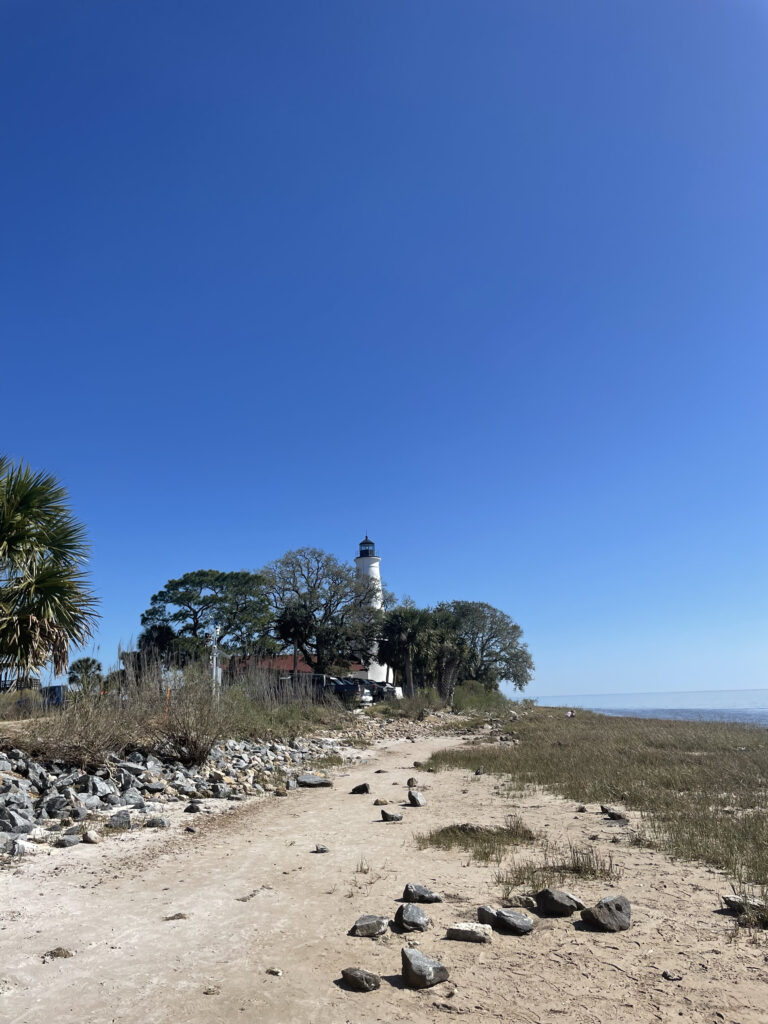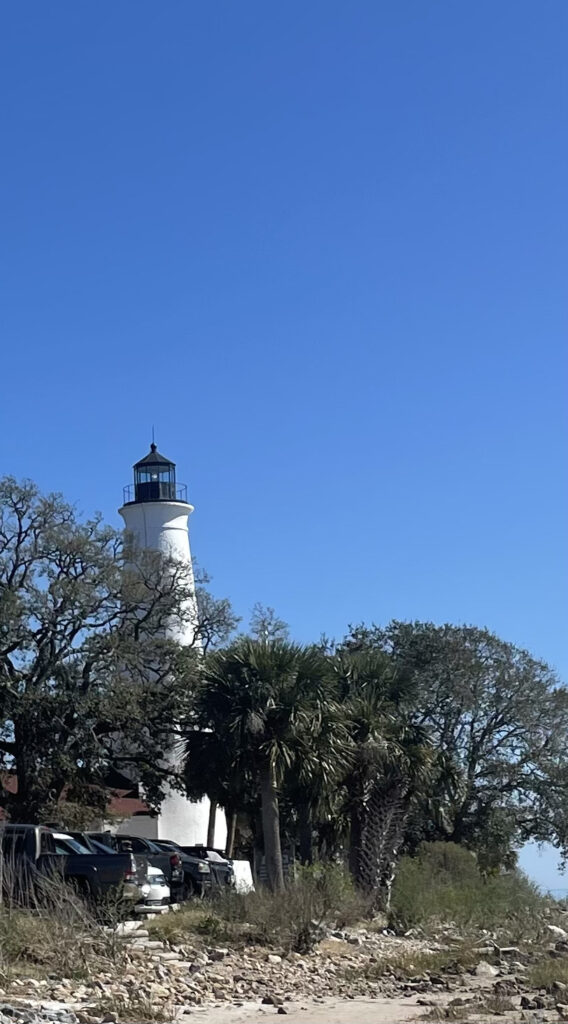
In February 2022, I had the opportunity to immerse myself in the natural beauty of the St. Marks Wildlife Refuge and Lighthouse, all under the brisk yet tolerable weather that characterized Tallahassee during that time. Eager for a day outdoors, my friends and I opted for a laid-back picnic on the sandy beach area, where we could soak in the serene ambiance.
As we enjoyed our picnic, the surroundings came alive with the sights and sounds of nature. From playful wildlife bustling about to dedicated anglers casting their lines into the water, there was a vibrant energy in the air. The distant image of the St. Marks Lighthouse, subtly emerging through the dense foliage, added a touch of enchantment to the scene. The chilly air seemed to enhance the sense of tranquility, creating a perfect setting for us to appreciate the natural beauty that surrounded us. The sound of waves lapping gently against the shore provided a soothing backdrop to our afternoon, accompanied by the occasional cries of seabirds overhead. For anyone living in Tallahassee who has yet to explore it, this is a definite must-see!

I opted to crop this recent image, placing a spotlight on a different focal point—the lighthouse, in contrast to the previous picture, which showcased the expansive beach and water. The intention behind this adjustment was to bring the viewer’s attention squarely onto the captivating presence of the lighthouse itself. By cropping the image, I had the opportunity to eliminate unnecessary details, resulting in a simplified and more focused background. This serves to declutter the visual narrative, allowing the viewer to engage more intimately with the primary subject.
Furthermore, the new composition adheres to the principles of the rule of thirds. Placing the image more to the left, this technique adds a dynamic quality to the overall presentation. This choice serves to accentuate the lighthouse’s significance, providing a fresh perspective that highlights its architectural charm and historical importance. The refined composition invites the viewer to appreciate the subject in a new light, fostering a deeper connection with the captivating essence of the scene.


Hi Kaitlyn!
I adore the imagery of the lighthouse set behind foliage, it really adds to the ambience you created throughout the content of your post!
The crop really brings the lighthouse into the foreground, its height and the black at the top make it a noticeable focal point. It follows the rule of thirds well in this regard. I do find the sky a little distracting, as it takes up so much expanse in the horizontal two-thirds of the photo. Perhaps the sky could be cut down a little? Or a little more of the ground could’ve been shown instead of the sky to make it appear as if the lighthouse towers higher in the sky? I think the fact that the path leads to the lighthouse creates an interesting story, too.
A little minor technical feedback, both photos had to be cited and I believe you had to create a CC license for at least the derivative or both. Just to watch out for in the next media labs. Great work!
Hi Kaitlyn! I’ve never made it out to the St. Marks Wildlife Refuge and Lighthouse, but it looks beautiful! When I first saw the original photo, the focal point for me was the sandy beach patch that leads up to the lighthouse rather than the lighthouse itself. In your cropped image, the focal point is clearly the lighthouse that you were intending to photograph! While the original photo is a beautiful beach scene, cropping it really turns it into a photo of a lighthouse.
The original photo has a center line for the eye to follow, a trail of sorts, to the lighthouse. The dirt trail has a lot of personality and adds depth to the photo leading to the lighthouse. The new image brings the lighthouse into focus, but since its obstructed by neighboring trees, the trees catch most of my attention. In comparing the two, it seems the accidental star of the photo are the rocks. I think a crop where they are the focus would have also worked. The dirt trail continues to give a natural line and provide depth, the rocks on the right in focus being a focal point with the ones on the left showing they are rogue rocks breaking from the pack. The patterns, shapes, and a lot of definition in the sand that would have made an interesting image.
Hello Kaitlyn
I so much love lighthouses and the history behind.
Your cropping of the lighthouse photo is a great example of how focusing on a specific subject can enhance a picture’s impact. By zooming in on the lighthouse, you’ve shifted the viewer’s attention directly to it, making it the main point of interest. This change simplifies the background, removing extra elements that might distract from the lighthouse. Your use of the rule of thirds, by positioning the lighthouse on the left side, it gives a guidance also of where the sandy beach is located and it adds a dynamic aspect to the image.
It highlights the lighthouse’s architectural beauty and historical significance in a new way. This focused approach allows viewers to connect more deeply with the lighthouse, emphasizing its role in the scene. Overall, i like it much, it’s a very successful edit in a beautiful topic that changes the photo’s narrative and showcases the lighthouse more effectively. Eager to see more of your work during the class!